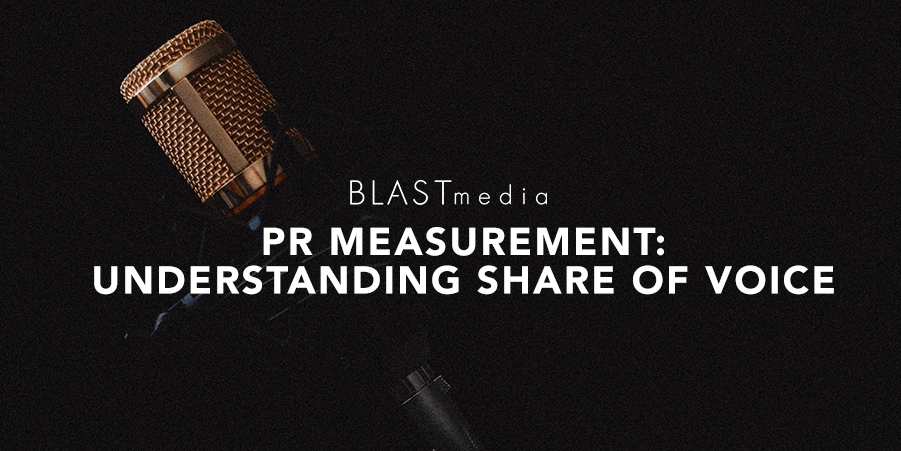Before the rise of technology, it was easier to escape quantitative measurement in PR because there wasn’t really a way to do it. Today, business leaders are demanding hard numbers to prove the worth of PR. Although the measurement, tracking and reporting processes can cause a resounding groan from most PR pros, there are many ways in which this can work in your favor. Understanding your company’s share of voice, or how your efforts are helping the company overall stack up against competitors, is a popular — and insightful — way to convey success.
What is Share of Voice?
PR Daily defines, share of voice, also known as SOV, as “the percentage of all online content and conversations about your company or brand, compared to those of your competitors.” In other words, if you were to round up every article mentioning either your brand or your competitors and create a pie graph, how big of a slice would your brand get? That number is your SOV.
When asked why they’re devoting time and effort to PR, many companies say “brand awareness.” However, brand awareness is pretty hard to quantify. SOV provides a way to look at media coverage on a deeper level and evaluate whether the brand is being referenced enough in material directly related to your industry. Analyzing a brand’s share of voice also provides tangible data that can help with ROI evaluations and strategic planning.
How to Calculate Share of Voice
To calculate share of voice, first determine your competitive set and time range. From there, count every piece of coverage competitive set, including the company you’re evaluating, during that time range. The coverage secured by your company, divided by the total coverage, is your share of voice.
You can always measure share of voice manually. However, there are a number of tools that help with the process. Two that we’ve found helpful include Cision and Trendkite.

How to Use Share of Voice
Share of voice can do more than just illustrate how you stack up against your biggest competitors. Digging into the data that makes up your SOV can help with planning and goal setting, as well as adjusting outreach mid-campaign and communicating success overall.
Share of voice can act as a great starting point to set goals for the future. Gaining a better understanding of where your brand sits today is essential before considering any change in strategy or tactics. This can also illuminate where strengths and weaknesses lie. If you’re finding others gain coverage for certain types of announcements or activities that you haven’t communicated externally before, it can help move the needle in the right direction.
It can also help in planning or adjusting outreach if you see others earning media coverage in areas you have neglected to focus. If a competitor has a larger SOV, digging into their coverage can provide direction for new media outlets to target. If your competitors are seeing more earned media success than you are, it might also be an indication that your message or outreach strategy needs an adjustment.
Finally, it can communicate success. Tracking and sharing results is essential if you want clients or executives to continue investing money into PR efforts. Business leaders, especially those in the B2B and SaaS space, make decisions based on hard data and numbers, so the more you can provide, the better chance you have of prolonging that investment.
What Share of Voice Doesn’t Tell You
Calculating share of voice can be very helpful in measuring the success of PR efforts, however, the results can be very two-dimensional. After all, it’s only one metric.
One issue with SOV is that only measures the amount of coverage, not the quality. It doesn’t take into account sentiment, where the brand name appears, how many other companies were mentioned in the piece or a variety of other qualifying factors. For example, there could be a scathing review in the Wall Street Journal for your brand that syndicates to other media outlets and earns millions of potential media impressions and, consequently, a large part of the conversation among your competitors. In reality, owning the share of voice in that instance was more detrimental to your brand than helpful.
There could also be moments when your brand’s share of voice is lower than desired, but the media placements you did secure are very strong. After all, depending on your overall business goals, a handful mentions in various publications could mean less to the brand than a very niche, on-message piece of coverage in a trade publication specific to the industry.
Just getting started measuring your PR efforts? We recommend using share of voice to bolster credibility for your PR team. It’s easy to get started and being able to drill down into data and create a narrative from the results can be extremely advantageous from the start, not only in showing success but also in influencing — and hopefully improving — ongoing efforts. That’s when share of voice really shines as a PR metric.
How do you measure success? Tweet us at @PANBlast to let us know!

